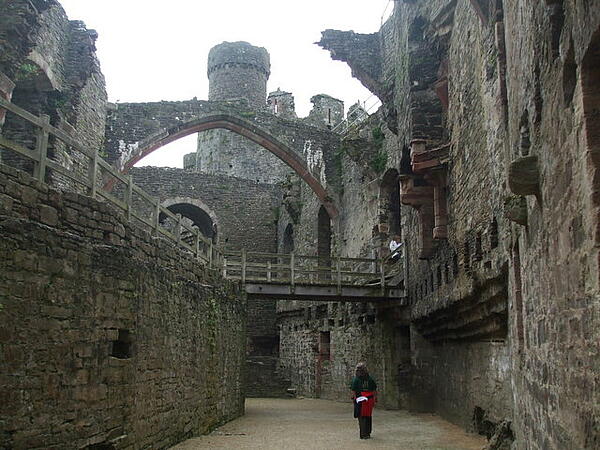Medieval Towns
In Medieval England towns were few and far between and significantly smaller than the towns we have today. Instead, most peasants resided in villages, but the idea of religious centres did appeal to many and this prompted the creation of some of towns and cities that are still in existence across England.
Aside from London, some of the largest towns created during this time were Canterbury, York, Leeds, Bath, Lincoln, Chichester and Hereford - all of which fell under the label of cathedral cities.
Due to the prominence of religion during this period, these cities drew people form far and wide for trade and worship. Some, including Thomas Becket’s place of death Canterbury Cathedral, were also important pilgrimage destinations.
The Domesday Book, created in 1087, included just six towns but records of populations in subsequent years are non-existent due to the lack of official counts and frequent (almost daily) changes to the figures.
Market fairs were a common cause of a population boost, but numbers quickly dropped once the fair had ended. Tax registers also fail to provide an accurate representation of town populations, including the one that assisted the Peasants Revolt in 1381, as many people were unable to register.

Much of the expansion of medieval towns took place around areas that were easy to access, such as crossroads or rivers. Water was a particularly important requirement as it provided a means of washing, drinking and sewage disposal - crucial for any area larger than the typical villages.
Despite being constructed near rivers, towns in medieval times were not particularly clean. With no sewage system readily available, many people chose to ignore the local waterways and simply dispose of their waste onto the street. This practise attracted rates and other vermin, which were thought to have contributed to the spread of the Black Death.
Although townspeople often failed to use the waterways for waste disposal, many villages in the surrounding areas did. This create polluted water as it flowed downstream and the lack of knowledge about hygiene meant the water was still consumed by townspeople, leading to significant disease in these highly populated areas. People who resided in towns or cities during medieval times were expected to lead hard and short lives.
If disease did not kill people, there was always a high chance they would be killed in fires. Towns and cities were almost universally constructed entirely from wood, which meant any mistakes with fire would spread quickly. The streets were also unsafe at night due to a lack of a policing system or street lights, so candles would be used to travel around the area. Of course, this could have devastating results if they came into contact with any of the wooden buildings.
When constructing houses within towns, people had to be wary of how much land they use due to the high costs associated with large floor spaces. As a result, many medieval houses were constructed up and out - with the first floor larger than the ground floor and the second floor larger than the first. This helped to keep costs low due to the reduced use of land.
Shops were also constructed in towns, providing craftsman services to local people. Due to the lack of literacy, many signs hung outside the shop simply displayed a pictorial depiction of the shopkeeper’s particular skills.
Trade was an important part of medieval town life, attracting people from miles around. However, this daily influx of strangers led to many town leaders boosting their security measures, from building surrounding fences to create gates that could be locked overnight.
Canterbury and York, for example, created large walls that helped deter criminals, but such sturdy security measures were not available to many of the smaller towns.
Despite the crime linked with frequent visitors, merchants were welcomed by town lords as they paid tax and contributed greatly to the area’s success. In essence, the higher the number of merchants, the more tax the sheriff could collect for the lord. However, the lack of reading and writing skills meant this was a very corrupt system in many towns.
To tackle the problem with corrupt tax systems, many townspeople in medieval times called for a charter to be created, which would clearly state the specific rights a town had. Many even specified that towns could collect their own taxes, so local lords and sheriffs could not. Towns could also construct their own law court to ensure all legal disputes were settled efficiently.
See also:
MLA Citation/Reference
"Medieval Towns". HistoryLearning.com. 2025. Web.
